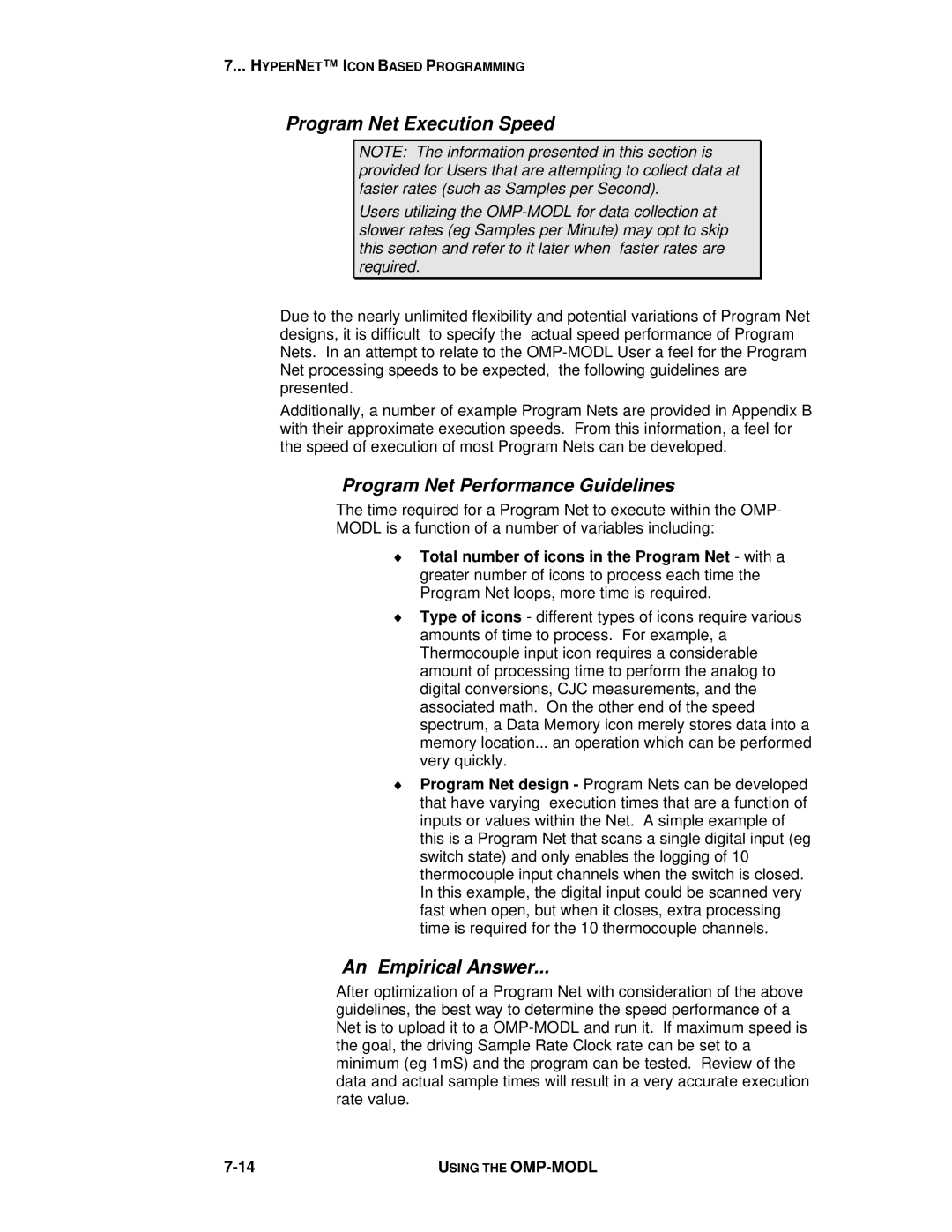
7... HYPERNET™ I CON BASED PROGRAMMING
Program Net Execution Speed
NOTE: The information presented in this section is provided for Users that are attempting to collect data at faster rates (such as Samples per Second).
Users utilizing the
Due to the nearly unlimited flexibility and potential variations of Program Net designs, it is difficult to specify the actual speed performance of Program Nets. In an attempt to relate to the
Additionally, a number of example Program Nets are provided in Appendix B with their approximate execution speeds. From this information, a feel for the speed of execution of most Program Nets can be developed.
Program Net Performance Guidelines
The time required for a Program Net to execute within the OMP- MODL is a function of a number of variables including:
♦Total number of icons in the Program Net - with a greater number of icons to process each time the Program Net loops, more time is required.
♦Type of icons - different types of icons require various amounts of time to process. For example, a Thermocouple input icon requires a considerable amount of processing time to perform the analog to digital conversions, CJC measurements, and the associated math. On the other end of the speed spectrum, a Data Memory icon merely stores data into a memory location... an operation which can be performed very quickly.
♦Program Net design - Program Nets can be developed that have varying execution times that are a function of inputs or values within the Net. A simple example of this is a Program Net that scans a single digital input (eg switch state) and only enables the logging of 10 thermocouple input channels when the switch is closed. In this example, the digital input could be scanned very fast when open, but when it closes, extra processing time is required for the 10 thermocouple channels.
An Empirical Answer...
After optimization of a Program Net with consideration of the above guidelines, the best way to determine the speed performance of a Net is to upload it to a
USING THE |
